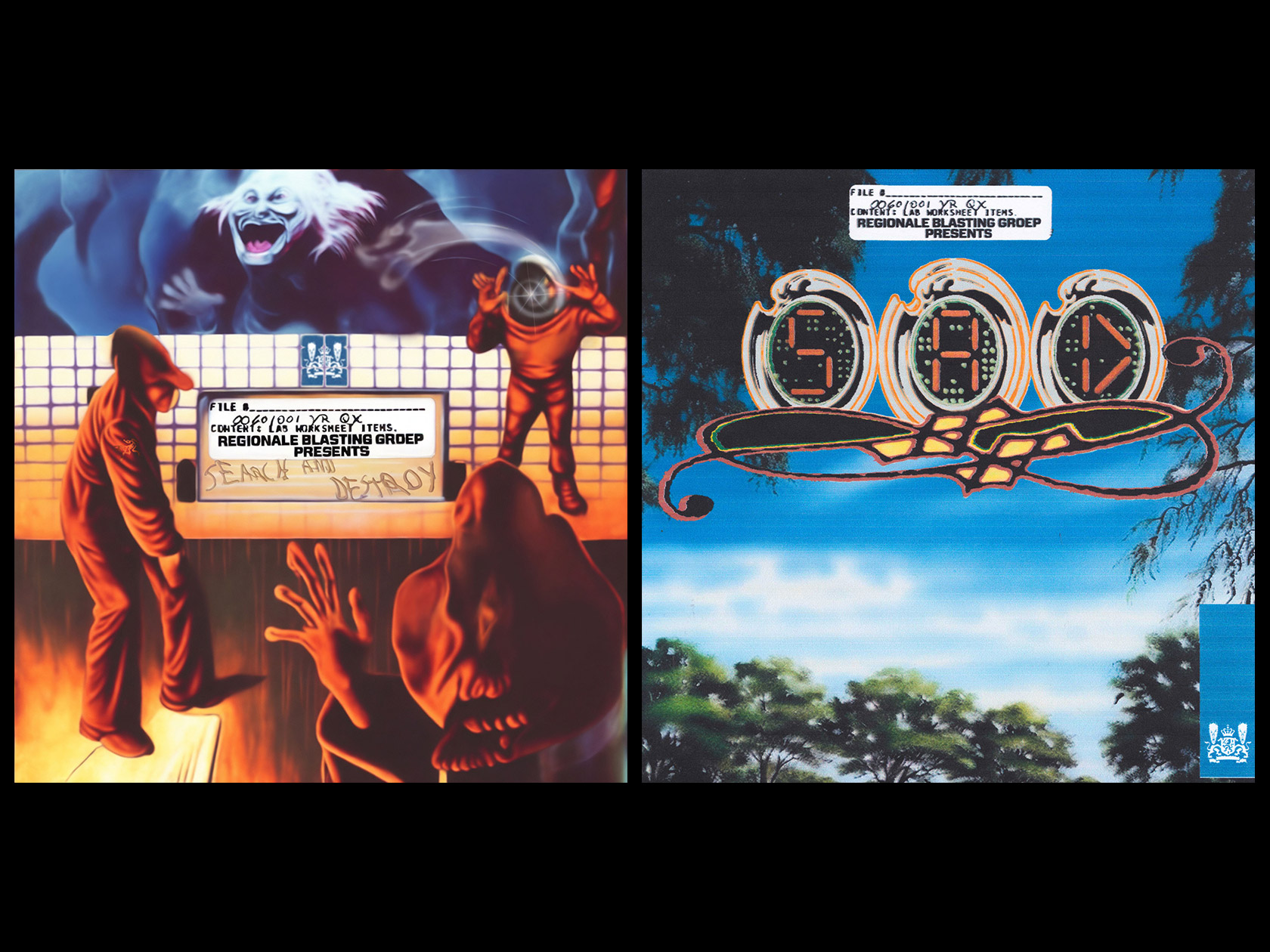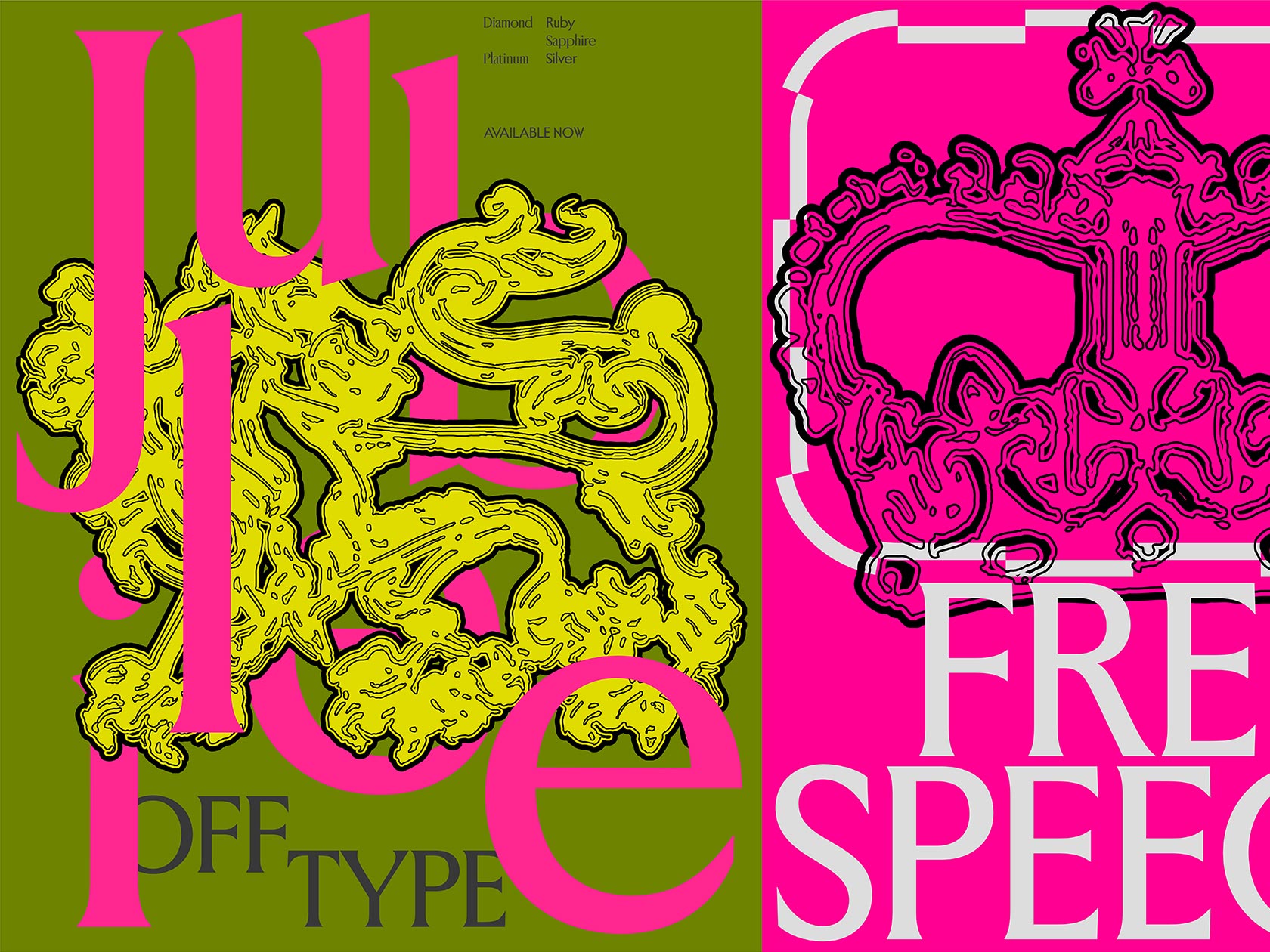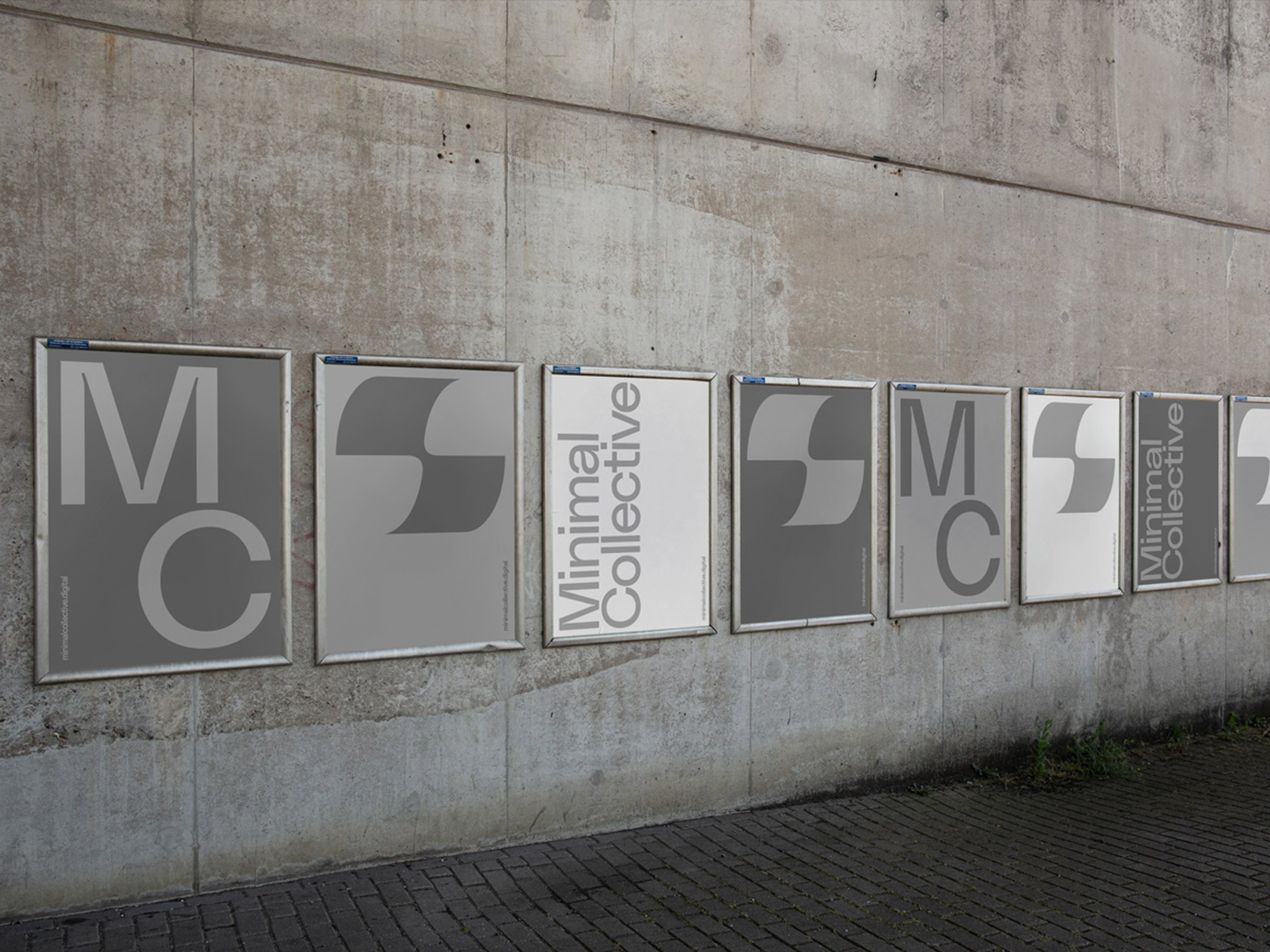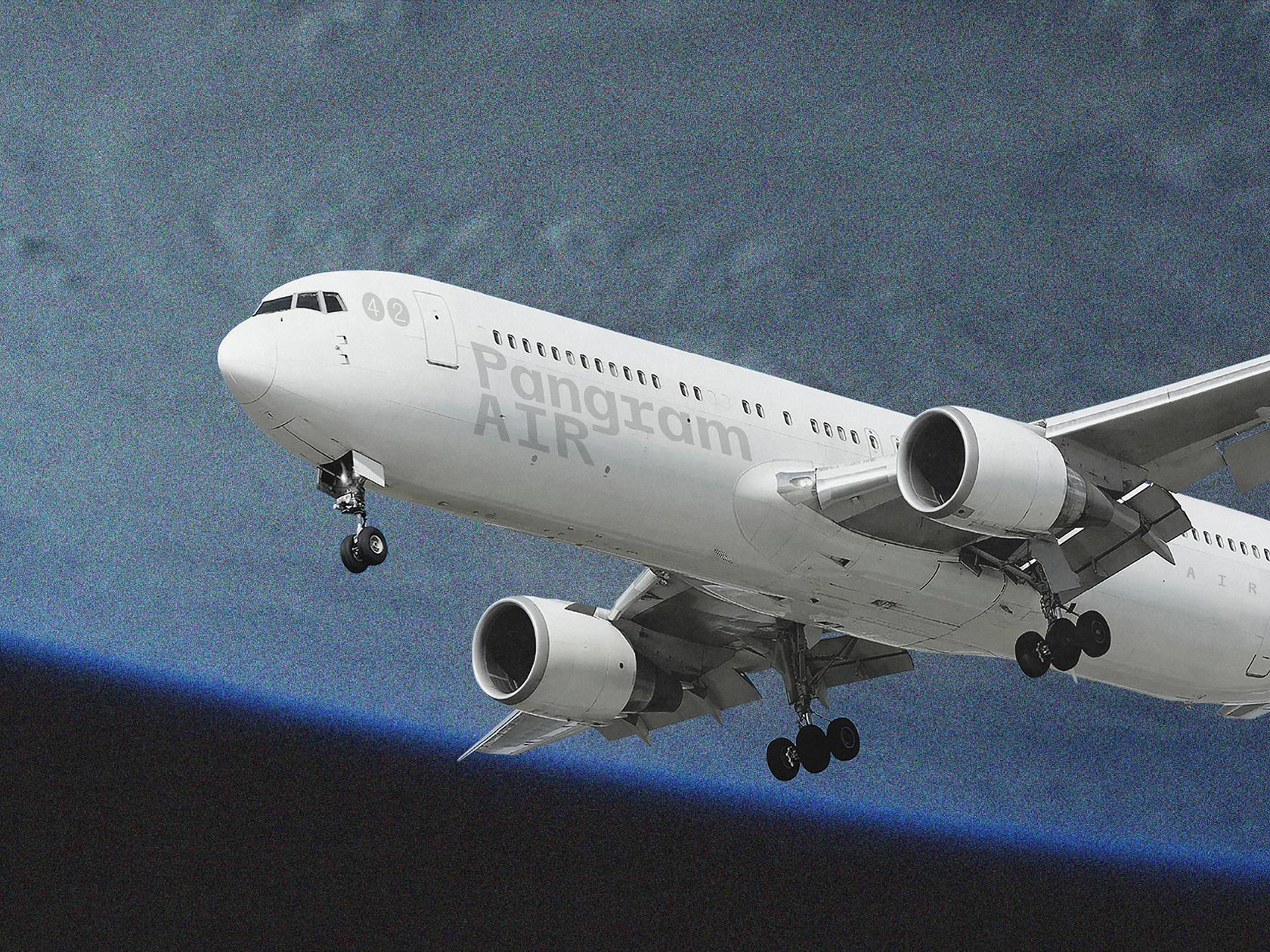Questioning the spaces in which we view art, the virtual exhibition SOAP explores the possibilities within our now prevalent virtual life and pushes the boundaries of the online interface. With many cultural institutions closed at the moment, the exhibition considers the architectural experiences when visiting a museum or an art gallery. As the idea for the exhibition came as a reaction to the lockdown, the three minds behind the project, Ozziline Bill, Brenna Horrox and Daniel Pope, emphasize that the current situation has heavily prompted the concept. By presenting works of thirteen different artists which all respond to Covid-19 in one way or another, the virtual group show reacts, reflects and embodies this strange and significant time. “We wanted to create something which would bring hope and happiness to people in such uncertain times. So in that way, the overall message of SOAP is hope”, Ozziline states. Among the presented artists are Caroline Ballegaard, Ludovica Bulciolu, the duo Tommy Camerno and Lee Stevens, Don Elektro, Harry Grundy, Tigris Li, David Lisbon, Esther Merinero, Freya McLean, Kirsty Sorley, Samantha Watson and Ozziline herself.

About two years ago, Ozziline and Brenna met when they were both assisting the artist (and Ozziline’s mother) Sarah Staton in London. “We were both kind of new to London, well at least new to the London ‘art scene’ and were looking for a partner in crime to go to openings and exhibitions with”, the duo tells us. “We then went to Arles Photo Festival together and it was clear we had a similar drive, passion and eye for glitzy creativity. So it made sense to work together. We always spoke about how being part of a collective or duo would be great, to bounce ideas off, to encourage one another to take the plunge and to help make the ideas reality.” After collaborating together on the recently published book “The Possessed Hands of Bill”, Ozziline and Brenna just knew how well they work together. With Ozziline’s strong focus on performance, photography and moving image, and Brenna’s curatorial side, the duo have developed a practice which adapts to the need of every project.
“Both being students of art schools who often attend exhibitions and openings, SOAP came as a way to fulfill the lack of IRL art we were able to absorb due to lockdown”, the two artists who later on formed the collective Body Odor Studios explain, “We wanted to create something which allowed other artists to create, exhibit and connect despite us all being ‘locked away’.” As the virtual exhibition aims at exploring the possibilities and limits of online spaces, the duo decided to team up with Daniel who studies Architecture at the Bartlett School of Architecture and has worked in numerous creative practices designing at the scale of stage and performance design to city masterplanning in London, Berlin and Beijing. In his personal work, he is interested in exploring the relationship between physical material processes and digital technologies. “The collaboration between the three of us enabled us to be very resourceful with our skillsets (also learning new skills as we went)”, Ozzline reflects, “Therefore the monetary restrictions to creating such a space in IRL was practically removed. So we were able to create a space which IRL would take years and lots of cash to build and within it a range of digital works by artists who were geographically located all over the place. Online space was our meeting point – we were very lucky to have that.”

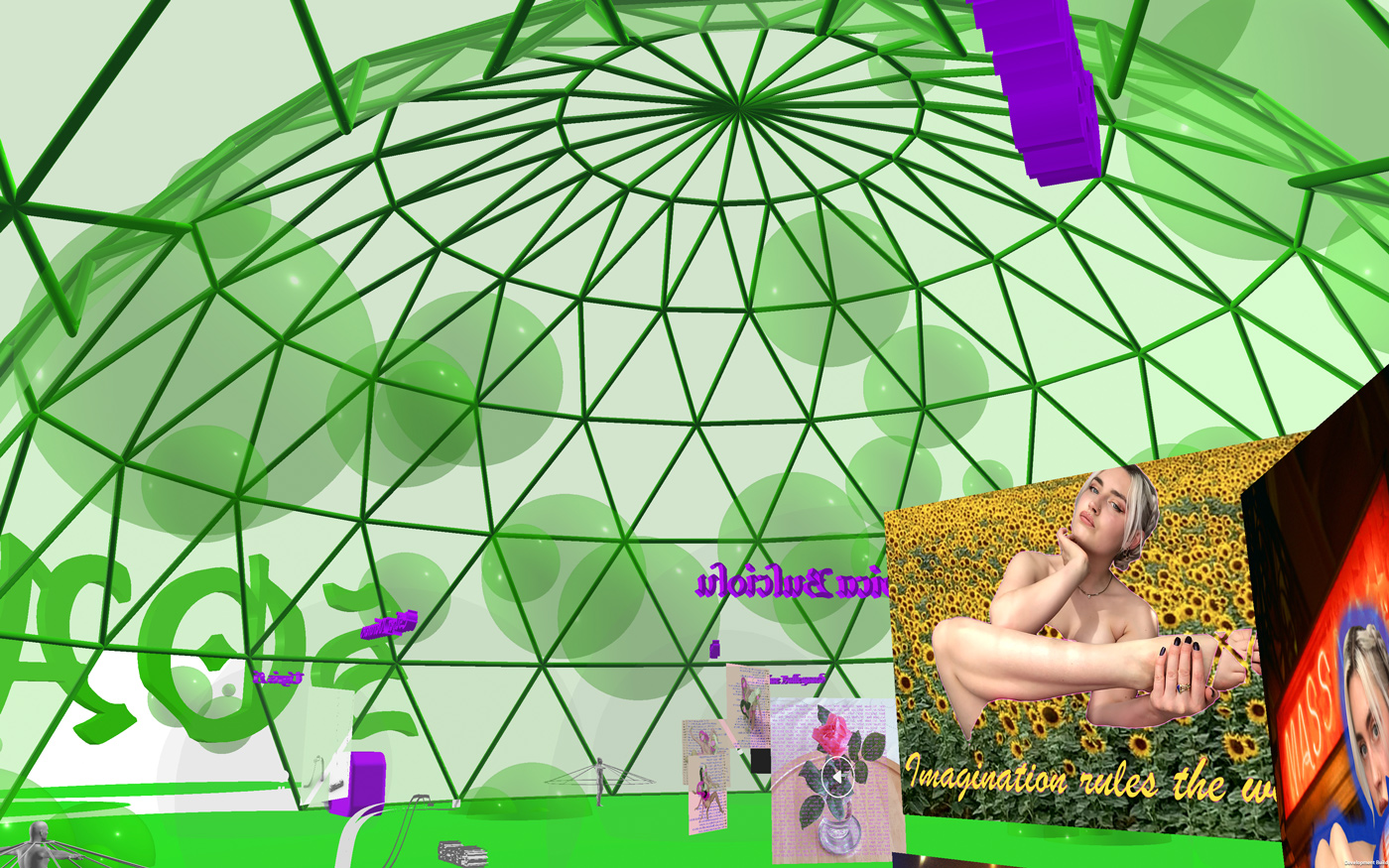
“The name SOAP was reactive to those early days of Covid-19 where #washyourhands was all over our socials (still very important to wash your hands of course!)”, Brenna tells Collide24, “There were ‘how to videos’ of how to properly wash your hands for 5 minutes with SOAP. Digital artists, like Tigris Li with her ‘Quarantine Lovers’ kissing in a soap dispenser, were quick to make work on these tokens coming from Covid’s internet commentary.” Apart from symbolizing this early memento of Covid-19 and giving a nostalgic overview of all the different stages of the virus, the title is also an abbreviation for a messaging protocol specification for exchanging structured information in the implementation of web services in computer networks, fitting to the concept of a virtual exhibition.
“SOAP to me looks like this wacky yet beautiful culmination: back end technology, the architectural thinking, the diverse skills creatively played with by the artists and the different cultural/political spheres which the artists exist in and bring to light”, Brenna tells us, “A digital commentary is in action. One that is reflective and critical of our relationship to the inner and the outer but also one that offers hope.” After announcing an Open Call on social media, Ozziline and Brenna carefully selected the artists that would be presented, looking for works that responded to Covid-19 and gave a sense to the vast emotions and effects surrounding the pandemic. “We also wanted a range of temporalities, mediums and visual aesthetics. We received a really impressive range of submissions from amazing artists much to our delight”, Ozziline and Brenna explain, “There is also strong expressions of desire coming through the exhibition. Desire for each other physically but also mentally.” This desire is clearly visible in the video “Emo Imvu” by Tommy Camerno and Lee Stevens, in which the artists travels through the different worlds of the online platform IMVU, experiencing transcendental moment together.

“The journey to creating SOAP and sharing it with the public was a process of moving between and floating. Floating between specialists and different knowledge forms – from our real lived experiences to unfamiliar languages embedded in code”, Ozziline states. After putting a lot of effort into the research about virtual exhibitions and digital artists, the duo shared their ideas with Daniel who then took over the creation of the virtual space. “The virtual geodesic domes of SOAP were an instinctive move when thinking about a non-physical exhibition space in the time of Covid. From the beginning we were taken by the notion of the sphere in the context to the pandemic”, Daniel explains about the concept which has been inspired by the work of the well known architect Richard Buckminster Fuller, “During Covid-19, the macro-scale of the sphere became parallel to the globe, as the pandemic swallowed the world whilst also attacking bodies on a microbial scale within the human body. We wanted the space to espouse notions of absolute efficiency; something lightweight, slender and structurally unassuming but with maximum efficiency and vigour. We wanted it to feel contained as a digitally inhabited space yet infinite in its potential to expand, multiply and grow.”
While Daniel concentrated on creating the architectural setting of the group show and Ozziline built the overall website, Brenna focused on learning more about the software Unity3D and virtually installing the artworks into the space, making it responsive to the viewer. “We had a few coding nightmares a few days before the launch but put our heads together, did some intense googling and long hours to get it online in time!”, Ozziline tells us, “For the launch we invited some friends of ours to do a DJ set at the end which followed on from the exhibition introduction and walk through. There were a lot of steps, a lot of learning and challenges for us both throughout the process but it paid off! It was exhilarating to create something we’d never done before and to connect with the talented participating artists. We couldn’t have done it without each other!”

“We recognize that different disciplines, skills sets and types of labour have unique knowledge forms so by collaborating we can start crossing them over and create something new from that. Also it is easier to stay motivated and sane then just being in your own head! And in general more fun!”, Ozziline and Brenna add on the subject of collaboration as a practice, “We think as young artists, collaborating is great due to the pool of resources you create and share from with other creatives. However, within this there is a lot of exchange of free labour. So when collaborating the challenge is figuring out what is a fair creative exchange, ensuring the workload is distributed and paying people when possible.”
As the exhibition was realized in Unity3D, the virtual exhibition feels like a game in which you have to learn to move around, see and experience the artworks. “There is an element of challenge in the user experience but these technological thresholds apparent when exploring SOAP provoke an interesting insight into our merged but also still fragmented relationship with technology”, Brenna adds. By mixing more experimental ideas, like letting the artworks float around in space, with elements from the “old world”, like a reception desk or fellow exhibition goers, Brenna, Ozziline and Daniel aimed at creating an experimental and utopian inspired, sphere-centric space. “Yes, the works do exist in socially distanced domes but perhaps the spatial interactivity of the transparent bubbles have a wider metaphor for the barriers/bubbles we create for ourselves IRL, only in SOAP one can move through the barrier. Once you enter the bubble the artworks become clearer. So even in Covid when personal space is the norm we can still put ourselves in each other’s shoes, leave our own bubbles and look through someone else’s eyes.”


As so many events, like festivals, concerts, exhibitions or conventions have been canceled in the wake of Covid-19, it has prompted a shift toward virtual events. SOAP raises the question if this phenomenon will stick around in the future. “Virtual events should be utilized in order to democratize access (not denying that there is still a large technological-gap) and attempt to lessen our extraction to the environment”, Brenna says, “But I think virtual events work best if they’re not just re-creating as a substitute. The experience should rather be elevated if online and the interface, aesthetics and architecture should attempt to experiment and break down boundaries. It offers a possibility of reclaiming the utopian and democratic potential the web initially offered. I don’t think they should ever replace real life events completely though as the empowerment and warmth one gets from being with people is great. For instance I can’t imagine a virtual protest having the same galvanizing effect as an IRL one. Sometimes you need to be visibly in the IRL system to enact change within it.”

In the last couple of months, Ozziline and Brenna have worked on a bundle of new collaborations together, among them their provocative window installation “Shopping Centre $hampagne” for Lithuania based pop-up artists shop SupaStore Academy or the poster campaign with artist and graphic designer Jasmine LaSode for the BLM movement. At the moment, the duo is currently preparing for ASP6, an annual artists book fair organized by Dan Mitchell and Sara MacKillop which will be held digitally this year. “We’ll be online in our own virtual room selling our book ‘The Possessed Hands of Bill’ as well as the SOAP T-shirts which we made as a way for viewers of SOAP to get an IRL token of the virtual event. All profits go to the participating artists. There’ll also be performative readings from our book, general chatting and question time for anyone who wants to know more about our processes so we’d definitely encourage y’all to come by!”
SOAP
Website
COLLABORATIONS TO LOOK AT:
Can’t Hold Us Down by Christina Aguilera and Lil Kim



